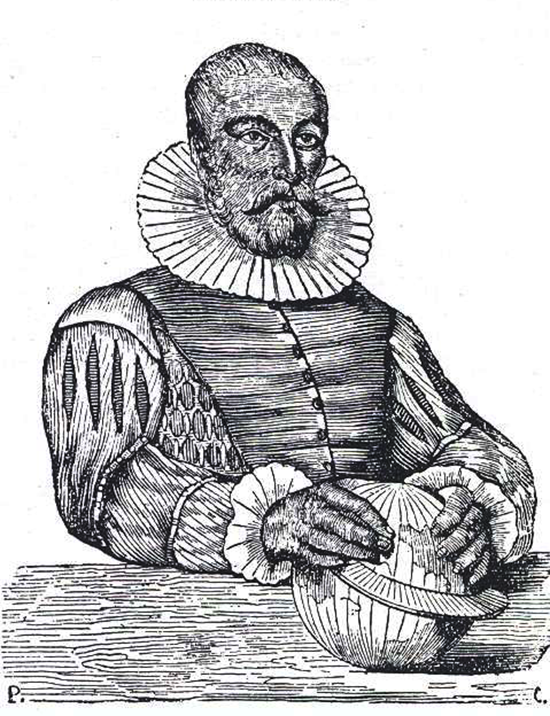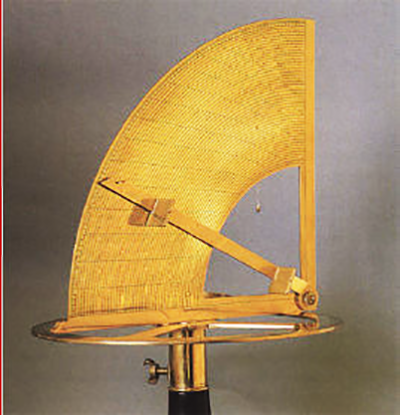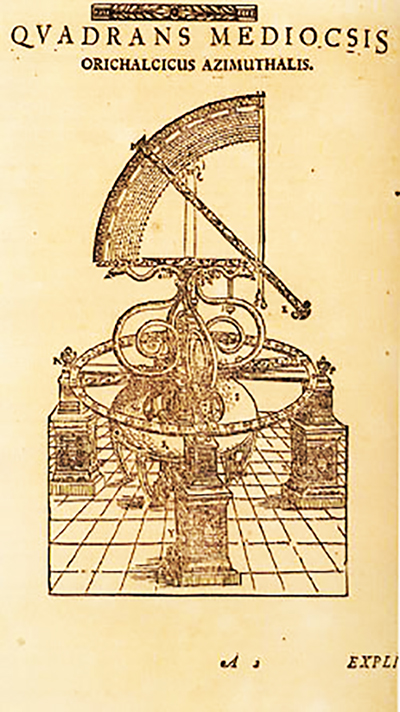 There is no lack in the history of Portugal of episodes worthy of the pride of a people. Nevertheless, some episodes – of which the Descobertas are the most striking example – succeeded thanks to characters that were obscured in Portuguese History – true giants, unknown to the vast majority of Portuguese people.
There is no lack in the history of Portugal of episodes worthy of the pride of a people. Nevertheless, some episodes – of which the Descobertas are the most striking example – succeeded thanks to characters that were obscured in Portuguese History – true giants, unknown to the vast majority of Portuguese people.
Let's quickly travel to Marinha Grande – renowned worldwide for the manufacture of molds. Now, a mold is a highly complex structure, demanding a level of precision that cannot be achieved with any other instrument – an ordinary ruler with a graduation of millimeters is incapable of measuring 0,01 mm with precision.
So, to measure things with great precision, proper instruments are used, such as a micrometer or a caliper. Both share one thing with each other – a special scale, which allows you to accurately determine the measure.
This scale, currently called 'Vernier' – in honor of Pierre Vernier – is actually an adaptation of an instrument called nonius, an invention of the Portuguese mathematician Pedro Nunes (in Latin known as Petrus Nonius), who, in 1542, introduced it to the world of astronomy as an integral part of the astrolabe, thus allowing extremely accurate measurements of the angles of the stars, and consequently allowing great precision in determining the position of the ship.
It's a fact. The nonius is considered one of the first high-precision instruments ever invented, in an era where calculators, computers and Marinha Grande were things of a very distant future.
Without it, there would be no accurate measurements, and without them, there would be no calculators or computers. Maybe Marinha Grande would get away with it, but not thanks to the molds.
And fantastically, we used a precision instrument, without having any idea that, after all, this tiny country came out of an idea and a fantastic instrument that completely revolutionized the concept of measurement, and consequently, of precision.
Do we stop here? No, let's go a little further.

Pedro Nunes was also the first mathematician to talk about loxodromes – or rhombic lines – a special arc that originates at the poles (this applying the example to planet Earth), and which intersects all longitude meridians at the same angle, ie, follows a constant route, measured relative to either the real or magnetic north pole.
Along with the isoazimuthial line and the Great Circular Arc, the loxodrome represents one of only three possible ways to draw a path between two points on the earth sphere (or any abstract sphere).
Special properties of loxodromes: in Mercator's projection, loxodromes are straight lines, and can be drawn without having to leave the 'edges' of the map. In other words, maritime navigation could be done with some ease using a map – that is, a two-dimensional surface – to navigate a three-dimensional surface, which is absolutely brilliant.
At that time, Pedro Nunes – the mathematician – was actually a doctor, with the medical course dealing with topics as diverse as astronomy and mathematics.
Among the various students who attended the University of Coimbra at the time, a young student from Bamberg, Germany stood out.
This young German, Christopher Schlüssel – a Jesuit mathematician – studied under the auspices of Pedro Nunes. Influenced by it, he became one of Europe's most notable astronomers – so notable that his books were dominant for 50 years.
Despite being a geocentrist (by virtue of religion), Schlüssel was a rebel, who pointed out flaws in the Ptolemaic model of the Solar System. He was highly respected by Galileo Galilei, with whom he shared and debated the discoveries made by the latter through his telescope.
It is Schlüssel that owes an important logical instrument – the Mirabilis consequence or Clavius' Law – which consists in establishing the veracity of a statement by the inconsistency of its denial. Famous example: “I think, therefore I am” – even if the validity of thought is called into question, it is impossible to deny that we are not thinking.

And finally, we arrive at the maximum exponent of Schlüssel's work, which lasts until today: taking the works previously done by Eramus Reinhold (the famous Prussian Tables), and based on the work of Aloysius Lilius, he carried out the necessary mathematical work to reform the system of calendar then in force, giving rise to the Gregorian calendar, formally adopted in 1582 by order of Pope Gregory XIII, and which remains until today.
On a final note, Christopher Schlüssel – being a Jesuit – had to Latinize his name. Thus, he is also known as Christopher Clavius.
In his honor, one of the craters on the Moon was named Crater Clavius, and immortalized in Stanley Kubrick's "2001-Space Odyssey" film, as well as in the book that gave rise to it, by Arthur Clarke.
So, when you look at the moon, pass by Marinha Grande, take a cruise, read a map, watch the «2001 Space Odyssey» at home or at the cinema, be proud: there is a good bit of Portuguese History there!
Author Alcides Simon
Science in the Regional Press – Ciência Viva
Alcides Simon, AMRSC, holds a Master in Chemistry from the University of Coimbra (2008) and Associated Member of the Royal Society of Chemistry.
He was a guest researcher at the University of Buenos Aires (Argentina, 2005) and at the University of Lund (Sweden, 2009).
He is currently a collaborator at the Department of Chemistry at the University of Coimbra, and is also a guest researcher at the Alexander Butlerov Chemistry Institute at the Federal University of Kazan (Russia) and at the Molecular Spectroscopy Group at the University of Valladolid (Spain).
His research is centered around biologically active molecules (specifically, molecules acting on the nervous system) and their behavior at a physical-chemical level, and he is finalizing his PhD at the University of Coimbra in the area of Molecular Spectroscopy.
He is passionate about literature and scientific dissemination.


















Comments